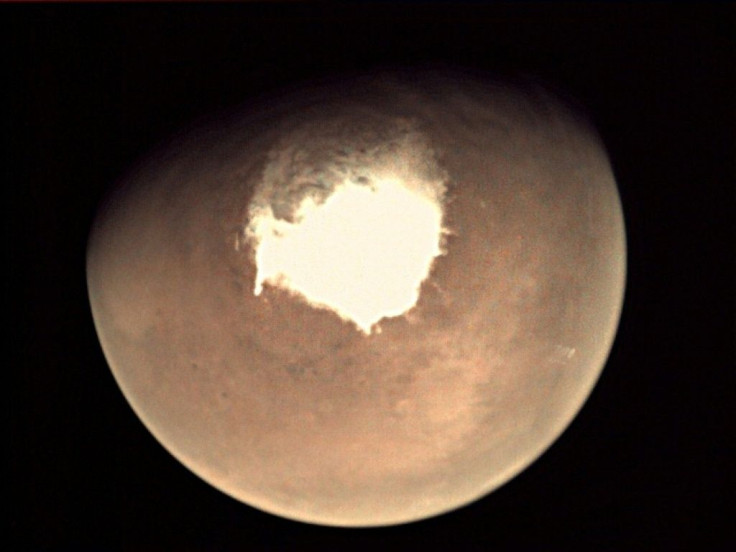Scientists Reveal How Mars Lost All Its Water, Became Dry And Dusty
KEY POINTS
- Regional and global dust storms and seasons on Mars all played a role in its loss of water, researchers say
- They suggested that a global ocean about 17 inches deep has been lost over the last billion years due to these
- The researchers analyzed new data from NASA’s Mars Atmosphere and Volatile Evolution (MAVEN) orbiter
Water has been found in Mars' upper atmosphere, where it is rapidly destroyed, according to researchers who analyzed data collected by NASA’s MAVEN spacecraft.
Scientists have long believed that liquid water once flowed on Mars due to the presence of fossilized rivers and deltas across its surface. Some believe that the red planet's water could have escaped to space, while others said the water vapor would have condensed into snow and fallen back to Mars' surface once it reached the red planet's frigid atmosphere.
In a new paper published in the journal Science, University of Arizona researchers found that Martian dust storms may have contributed to the planet's water escaping into space after analyzing new data from NASA’s Mars Atmosphere and Volatile Evolution (MAVEN) orbiter. MAVEN has been recording the composition of the red planet's upper atmosphere since 2014.
"We know that billions of years ago, there was liquid water on the surface of Mars," Shane Stone, lead author of the study and a planetary scientist at the University of Arizona's Lunar and Planetary Laboratory, said, SciTechDaily reported.
"There must have been a thicker atmosphere, so we know that Mars somehow lost the majority of its atmosphere to space. is trying to characterize the processes responsible for this loss, and one portion of that is understanding exactly how Mars lost its water," he continued.
Stone and his co-authors — which include his research adviser Roger Yelle, a University of Arizona planetary sciences professor — found that when Mars comes to its closest distance to the sun during summer in the Martian southern hemisphere, the planet warms. This then causes its water to move from the surface to the upper atmosphere, where it is lost to space. This process occurs about once every two Earth years, which is equivalent to one Martian year (687 days).
Aside from this, Mars' regional and global dust storms lead to further heating of the atmosphere and more water moving upward. Regional dust storms occur every Martian year, while global dust storms cover the red planet once every 10 years.
According to Stone, this process doesn't coincide with previous theories on how water escaped Mars. One suggestion was that ice is converted to a gas and is destroyed by the sun's rays in the lower atmosphere, but seasons and dust storms were not taken into account in this process. Due to this, Stone believes that the "classical process" is still incomplete.
"This is important because we didn't expect to see any water in the upper atmosphere of Mars at all," Stone said. "The loss of its atmosphere and water to space is a major reason Mars is cold and dry compared to warm and wet Earth. This new data from MAVEN reveals one process by which this loss is still occurring today."
According to the researchers, a global ocean on Mars about 17 inches deep has been lost over the last billion years due to the process they suggested.
“If we took water and spread it evenly over the entire surface of Mars, that ocean of water lost to space due to the new process we describe would be over 17 inches deep,” Stone said. “An additional 6.7 inches would be lost due solely to the effects of global dust storms.”

© Copyright IBTimes 2025. All rights reserved.





















